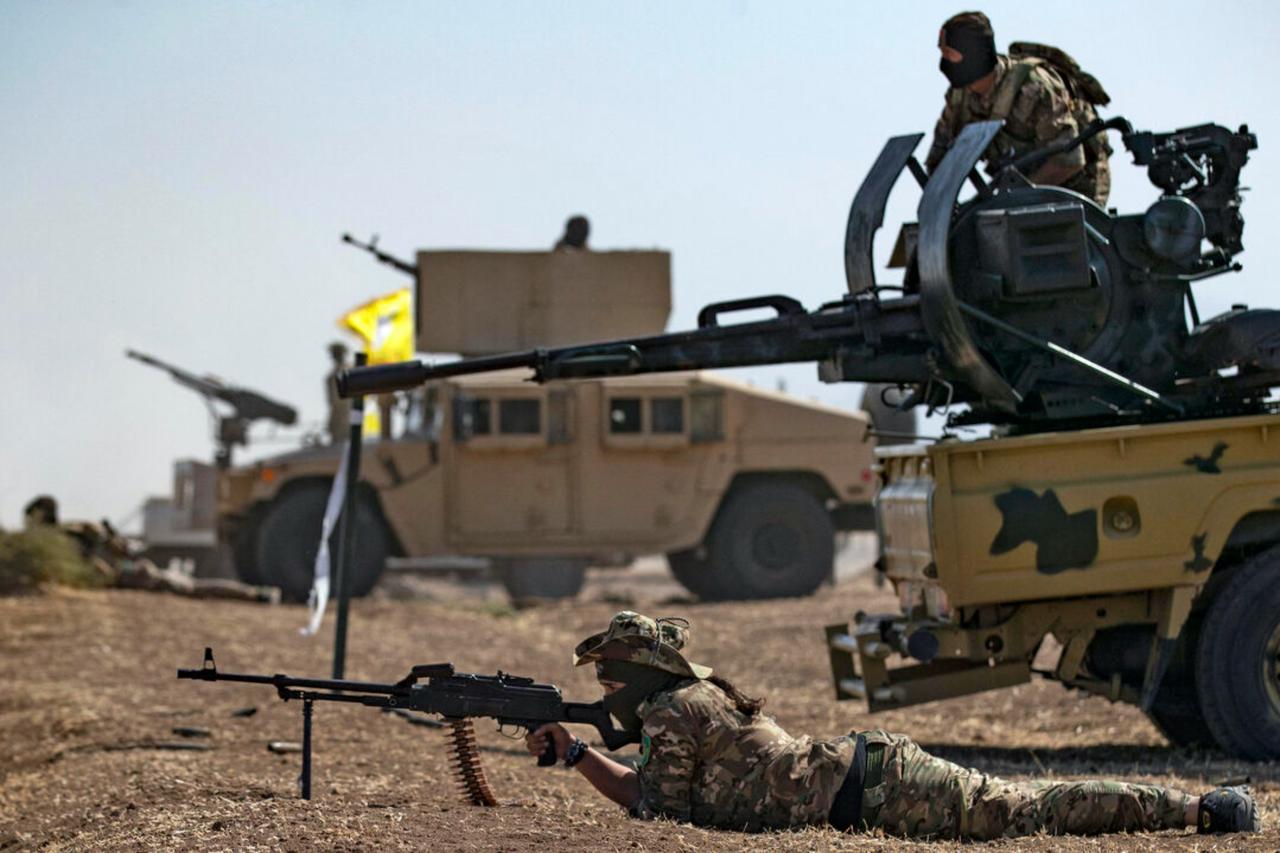
The PKK/YPG terrorist group, operating under the name SDF, is constructing supply lines along the Euphrates River and contact lines with the Damascus administration in Raqqa, Aleppo, and Deir ez-Zor provinces, as well as along the Syria-Türkiye border in occupied areas.
Following the Damascus administration's suspension of Paris negotiations, the PKK/YPG, which advocates for a decentralized structure, has intensified its activities along the Türkiye border in Raqqa, Aleppo, and Deir ez-Zor after holding a conference with prominent Syrian Druze and Alawite figures in Hassakeh.
PKK/YPG terrorists are laying mines along the first defense line between Hassakeh's al-Malikiyah and Aleppo's Ain al-Arab districts along the Türkiye border.
The terrorist organization has begun establishing three defense lines similar to those on the Türkiye border along contact lines with the Damascus administration in Aleppo's Deyr Hafir region, Raqqa's Tabqa region, and Deir ez-Zor's Euphrates River region.
The PKK/YPG has positioned medium and light weapons alongside anti-tank rocket-type weapons along the first line, while deploying armored personnel carriers, mortars and artillery batteries on the second line.
The organization has positioned long-range artillery batteries and kamikaze drones on the third defense line. To camouflage weapons on these lines, it has accelerated tunnel excavation, particularly in Raqqa and the Euphrates River basin.
The organization has connected these lines and linked them with a fourth line for weapons and logistics supply.

Following PKK/KCK terrorist group leader Murat Karayilan's adoption of the "Tunnels are our fortresses" strategy, the SDF began digging tunnels in areas it occupied after clashes with Daesh in Deir ez-Zor's Baghouz district in February 2019.
The PKK/YPG terror group aims to create a network connecting major settlements east of the Euphrates River through tunnels, seeking both protection against military operations and long-term resistance capacity.
Recently, as a defense tactic, the terror group has begun constructing fake position tunnels that are mined and rendered unusable around Raqqa's Tabqa district, Aleppo's Tishrin Dam, the Euphrates River basin, and around Hasakah.
The PKK/YPG terrorist organization reportedly operates a reinforced concrete tunnel production facility resistant to shoulder-fired RPG anti-tank weapons in Hassakeh's Rumeilan district, where one of the largest U.S. bases is located.
The tunnels used by the PKK/YPG are divided into three main categories: those used for personnel passage, those wide enough for vehicle passage, and those used as shelters, living spaces, and command centers.
In Raqqa, located in a basin with soft soil layers near the Euphrates River, tunnels excavated by PKK/YPG pose serious threats to the city's infrastructure and public safety.
Engineer Abdulrazzaq Ulayvi, a specialist in dams and water resources, said that tunnels dug by the terrorist group in Raqqa's Tabqa and Safsafah districts, where underground water levels are high, pose serious danger to surface structures.
"These tunnels pass under hospitals, schools and other public buildings. The fact that many tunnels are interconnected could cause large areas to be affected in case of a possible collapse," Ulayvi said.
"Tunnels extend from the Panorama area toward Furusiyya, passing under the Maternity Hospital, State Hospital and many schools, reaching as far as Naim Junction. These structures are interconnected and form an extensive network under the city," Ulayvi stated.
Warning that low-intensity earthquakes or explosions could occur, Ulayvi said, "Such events could lead to the sudden collapse of structures above the tunnels and cause serious casualties."
On March 10, the Syrian presidency announced an agreement to integrate the SDF into state institutions, stressing the country's territorial integrity and rejecting any separatist agenda.
The SDF, largely controlled by the YPG—the Syrian offshoot of the PKK—was highlighted in the statement.
Since the ouster of Bashar al-Assad last year after 24 years in power, the Syrian government has stepped up security measures. Assad fled to Russia in December, marking the end of the Baath Party's rule since 1963. A transitional administration, headed by President Ahmad al-Sharaa, took office in January.
The PKK, listed as a terrorist organization by Türkiye, the U.S., and the EU, convened its congress in May and announced its dissolution, following a February call by its imprisoned ringleader, Abdullah Ocalan, for an end to the decadeslong attacks.
On July 11, a group of 30 PKK terrorists, including 15 women, surrendered and destroyed their weapons in Iraq's Sulaymaniyah province by throwing them into a burning cauldron.